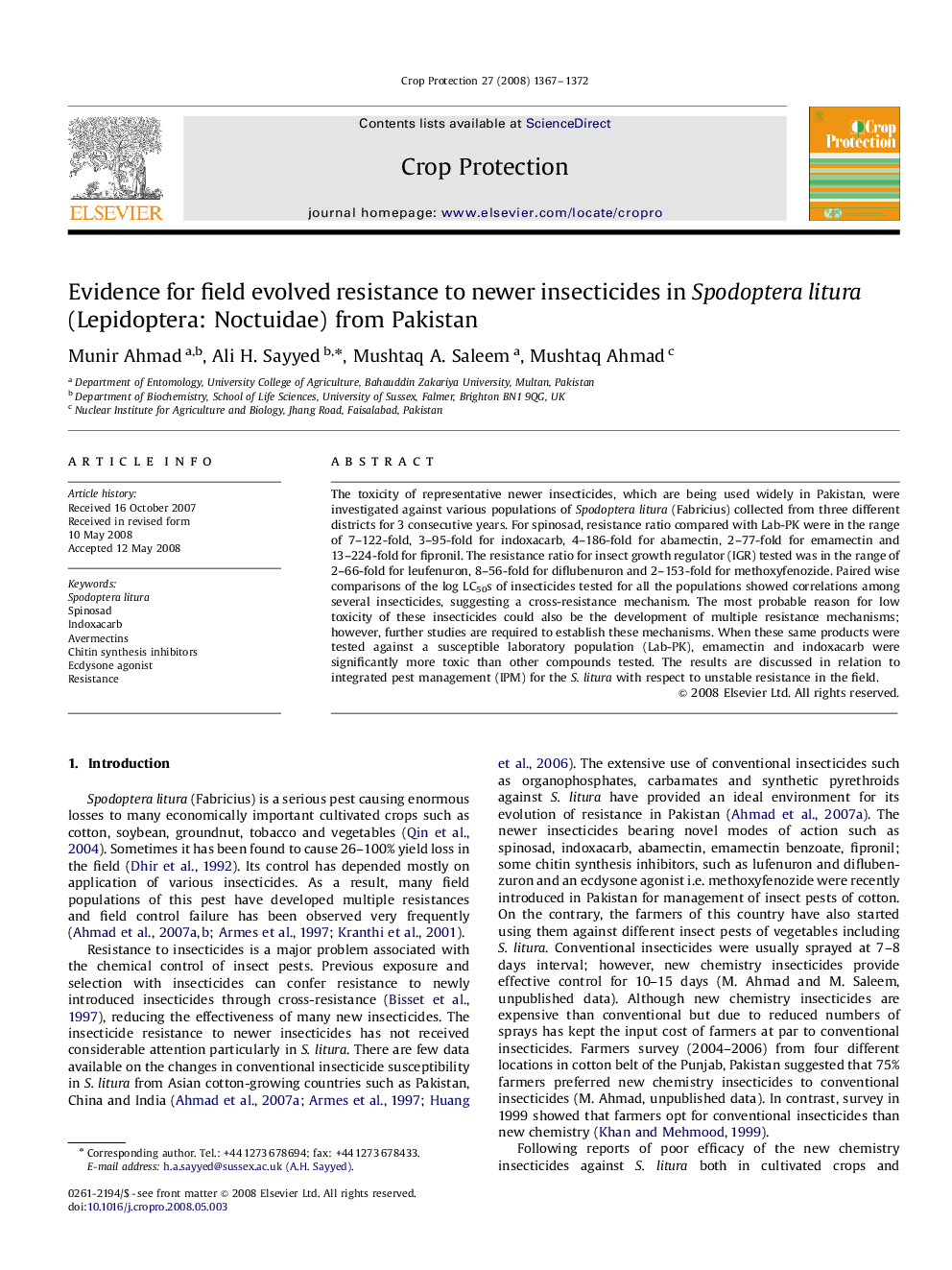| Article ID | Journal | Published Year | Pages | File Type |
|---|---|---|---|---|
| 4507666 | Crop Protection | 2008 | 6 Pages |
The toxicity of representative newer insecticides, which are being used widely in Pakistan, were investigated against various populations of Spodoptera litura (Fabricius) collected from three different districts for 3 consecutive years. For spinosad, resistance ratio compared with Lab-PK were in the range of 7–122-fold, 3–95-fold for indoxacarb, 4–186-fold for abamectin, 2–77-fold for emamectin and 13–224-fold for fipronil. The resistance ratio for insect growth regulator (IGR) tested was in the range of 2–66-fold for leufenuron, 8–56-fold for diflubenuron and 2–153-fold for methoxyfenozide. Paired wise comparisons of the log LC50s of insecticides tested for all the populations showed correlations among several insecticides, suggesting a cross-resistance mechanism. The most probable reason for low toxicity of these insecticides could also be the development of multiple resistance mechanisms; however, further studies are required to establish these mechanisms. When these same products were tested against a susceptible laboratory population (Lab-PK), emamectin and indoxacarb were significantly more toxic than other compounds tested. The results are discussed in relation to integrated pest management (IPM) for the S. litura with respect to unstable resistance in the field.
